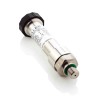 Sensors & instrumentation for leak testing applications.
Sensors & instrumentation for leak testing applications.
Find a high resolution sensor for detecting very small drops in pressure. Display decaying pressure with a digital indicator or set alarms to trigger at threshold pressures. Record pressure drop trends with a battery powered pressure data logger.
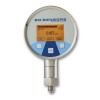 DM01 Multi-Range High Accuracy Pressure Gauge - High precision digital pressure gauge with 0.05% full scale accuracy, exchangeable pressure range modules from 100 mbar (1.5 psi) up to 400 bar (6000 psi).
DM01 Multi-Range High Accuracy Pressure Gauge - High precision digital pressure gauge with 0.05% full scale accuracy, exchangeable pressure range modules from 100 mbar (1.5 psi) up to 400 bar (6000 psi).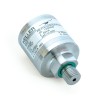 41X Low Range Digital Output Pressure Sensor - Low pressure sensor with a USB, RS232 or RS485 digital output interface for measuring low range gauge or differential pressures from 10 to 300 mbar.
41X Low Range Digital Output Pressure Sensor - Low pressure sensor with a USB, RS232 or RS485 digital output interface for measuring low range gauge or differential pressures from 10 to 300 mbar. UPS-HSR USB Pressure Sensor with High Sample Rate Logging - USB ready digital pressure sensor for recording pressures with a high speed sample rate of up to 1 kHz to a computer.
UPS-HSR USB Pressure Sensor with High Sample Rate Logging - USB ready digital pressure sensor for recording pressures with a high speed sample rate of up to 1 kHz to a computer. XSYS-0011 Portable Multichannel Data Logger with Optional Printer and Integrated Transport Case - The XSYS-0011 is supplied as a portable transport case with a CMC Multicon colour touchscreen data logger plus an optional MLP-149 portable printer integrated.
XSYS-0011 Portable Multichannel Data Logger with Optional Printer and Integrated Transport Case - The XSYS-0011 is supplied as a portable transport case with a CMC Multicon colour touchscreen data logger plus an optional MLP-149 portable printer integrated. 33X High Accuracy Digital Output Pressure Sensor - High precision pressure transducer with an accuracy of 0.05% full scale with a RS485, USB or RS232 digital interface for connecting to a PC.
33X High Accuracy Digital Output Pressure Sensor - High precision pressure transducer with an accuracy of 0.05% full scale with a RS485, USB or RS232 digital interface for connecting to a PC.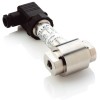 PD33X Digital Differential Pressure Sensor - High precision differential pressure transducer with accuracy of 0.1% full scale. Available with RS485, USB or RS232 for connecting to a computer.
PD33X Digital Differential Pressure Sensor - High precision differential pressure transducer with accuracy of 0.1% full scale. Available with RS485, USB or RS232 for connecting to a computer.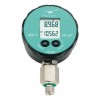 LEO3 Current or Digital Output Pressure Gauge - LCD digital pressure gauge powered externally by a 2 wire series 4-20mA current loop or a digital interface.
LEO3 Current or Digital Output Pressure Gauge - LCD digital pressure gauge powered externally by a 2 wire series 4-20mA current loop or a digital interface.
